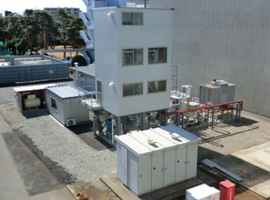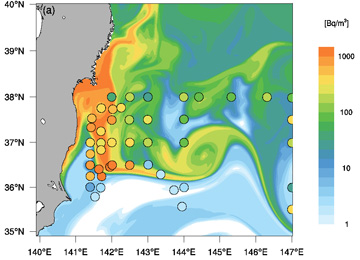About NRRC
Organization
Activities
Risk Assessment Research Team
Personnel
Approximately 45 researchers (Main Research Center: Yokosuka-area)
Research Fileds
Risk Assessment Research Team is composed of five research fileds as follows.
| Nuclear Risk Engineering | |
|---|---|
| Specialties of Members | Nuclear reactor system, Heat transfer and thermal hydraulics, Risk engineering, Reliability engineering, Risk communication, etc. |
| Main Research Topics | Development of PRA methods and their application / Improvement of maintenance with risk information / Development of risk communication method for plant risk management |
| Internal Hazard PRA | |
| Specialties of Members | Fire engineering, Combustion engineering, Reliability engineering, etc. |
| Main Research Topics | Enhancement of internal fire and flooding PRA / Development and Demonstration of fire protection measures / Improvement of fire model |
| Human Reliability | |
| Specialties of Members | Reliability engineering, Nuclear reactor system, Human factors, etc. |
| Main Research Topics | Development of Human Reliability Analysis Methods / Development of human performance improvement measures |
| Severe Accident Assessment and Technology | |
| Specialties of Members | Heat transfer and thermal hydraulics, Nuclear fuel, Nuclear reactor engineering, Computational fluid dynamics, Electrochemistry, etc. |
| Main Research Topics | Elucidation of severe accident-related phenomena, model development and implementation in analysis codes, uncertainty quantification, and application of accident progression analysis to Level 2 PRA |
| Environmental Assessment | |
| Specialties of Members | Environmental risk evaluation, Atmospheric diffusion, etc. |
| Main Research Topics | Development of level 3 PRA method / Development of atmospheric diffusion evaluation methods |
Main Research Facilities
Filtered Vent Testing Facility
Installation of Filtered Containment Venting Systems (FCVSs) in the nuclear power plants has been advanced to enhance nuclear safety. The FCVS allows for the containment over-pressure release and reduces the radioactive release through multi-scrubbers. Typical FCVSs adopt venturi scrubber, water (alkaline solution) scrubber, metal-fiber filter and molecular sieve as multi-scrubber. CRIEPI constructed a FCVS performance test facility to acquire a systematic database of FCVS performance and optimize the FCVS operation procedure (February 2014). This test facility has a real scale test vessel (8m in height, 0.5 m in inner diameter), steam boiler, iodine/ aerosol generation system and the latest measurement system. This system can measure the FCVS performance under a variety of conditions (temperature, pressure, gas-flow rate, and water quality).
 |
 |
Simulation of Ocean Diffusion of Radioactive Materials
The oceanic pollution that resulted from the discharge of radioactive materials following the accident at the Fukushima Daiichi Nuclear Power Station was a concern not only for the coastal population of Fukushima, but also for countries facing the Pacific Ocean. This called for rapid clarification of the actual dispersal situation by oceanic monitoring, but it was hard to gain an adequate understanding because of the difficulty in collecting water samples by ships.
Therefore, right after the accident at the Fukushima Daiichi Nuclear Power Station, CRIEPI has developed a simulation method to illustrate the oceanic dispersion off the coast of Fukushima and in the North Pacific based on the research of global warming and knowledge from safety evaluations for sea transport of radioactive materials. CRIEPI compared the simulation results with the oceanic monitoring data to clarify the actual situation of oceanic dispersion, and publicized its findings in academic journals. CRIEPI will apply the methodology not only to the coast of Fukushima but also to other ocean areas.

Figure Comparison of the simulation results and the observation results
of the 137Cs concentration on the surface layer of the ocean off the coast of Fukushima
(from June 4, 2011 to June 18, 2011, represented by circles).




